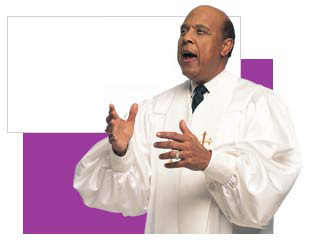HED AIDS-HIV Initiative
We pray and encourage that you will use the time to reflect on your risky and destructive behavior, get comprehensive AIDS education and testing, and seek counseling and treatment if necessary.
The church will stand with you through your journey.
As noted above, the Church will forcefully use its moral authority to deal with the AIDS epidemic forthrightly, clearly and comprehensively. No other disease has caused the Church more pain than the AIDS epidemic. Once the 35 panels have been selected AIDS will be one of the first diseases tackled. HIV/AIDS threatens the existence of the Black Church and it must be eliminated. This can only be done through extensive education, regular testing and the promotion of safe sex practices, like the use of condoms and abstinence.
Because of the rapid growth of HIV/AIDS in the Black community, and especially its aggressive attack upon both heterosexuals and African American women, the church feels strongly that it must work closely with public health experts in coming up with a strategic plan to eliminate AIDS in all segments of the African American community.
Here are the cornerstones to the HED program:
-
The Black Church AIDS Epistle – We will issue a theological epistle on AIDS and cite it as an
evil to the Church, thus allowing the Church to take unusual steps to eliminate AIDS from its
community. The theological framework on this epistle will rest on three biblical principles.
- One, that Christ has come so that we can have life in heaven more abundantly.
- Two, to love our neighbors as ourselves. This principle denotes our responsibility to our partners, our Church, our community and our family. The only way to offer love is to be honest and forthright about one’s AIDS status, thus protecting oneself, one’s friends, one’s sexual partners, one’s neighbor and one’s community.
- The third principle promoted is that we have all sinned and fallen short of the Glory of God and the Black Church will make no distinction between those who are HIV positive and those who are negative, those who are straight and those who are gay, and we will share the love of God through our savior Jesus Christ with everyone. The Church will promote its ordinance and ethics, and will not compromise. It will also continue to hold sacred the responsibility of marriage and the importance of faithfulness to one’s self, one’s sexual partner, and one’s community.
Testing – Testing will be encouraged at every phase of the life of individuals who are sexually active. This includes those who are married and those who are not.
Safe Sex Practices – The Church will promote all forms of safe sex practices including the use of prophylactics and the principles that govern the holiness of abstinence.
Although African Americans are only 13.6% of the U.S. population, they account for 43% of HIV infection cases in 2009.
- African American males have almost 7.6 times the AIDS rate as white males.
- African American females have 20 times the AIDS rate as white females.
- African American men are 10 times as likely to die from HIV/AIDS as Non-Hispanic White men.
- African American women are over 22 times as likely to die from HIV/AIDS as Non-Hispanic White women.
- African American children are twice as likely to be diagnosed with HIV infection, as compared to the White children.
- In 2010, African Americans were 8.5 times more likely to be diagnosed with HIV infection, as compared to the White population.
At a glance – HIV Cases and Rates (Adults)
| # Cases | Rate | African American/ White Ratio |
|
|---|---|---|---|
| African American males | 15,444 | 116.0 | 7.6 |
| White males | 12,111 | 15.3 | |
|
|||
| African American females | 6,268 | 41.7 | 19.9 |
| White females | 1,733 | 2.1 | |
|
|||
| African American (both sexes) | 21,854 | 62.0 | 8.5 |
| White (both sexes) | 13,878 | 7.3 | |
Source: CDC 2012. HIV Surveillance Report: Diagnoses of HIV Infection and AIDS in the United States and Dependent Areas, 2010, v.22. Table 3a.
http://www.cdc.gov/hiv/surveillance/resources/reports/2010report/pdf/2010_HIV_Surveillance_Report_vol_22.pdf [PDF | 1.79MB]
At a glance – AIDS Deaths:
| Cumulative # Deaths | # Deaths | % of total cases | |
|---|---|---|---|
| African Americans | 250,745 | 8,782 | 49% |
| White | 260,572 | 5,380 | 30% |
| Total Population | 619,380 | 17,774 |
Source: CDC 2012. HIV Surveillance Report: Diagnoses of HIV Infection and AIDS in the United States and Dependent Areas, 2010, v.22. Table 12a.
http://www.cdc.gov/hiv/surveillance/resources/reports/2010report/pdf/2010_HIV_Surveillance_Report_vol_22.pdf [PDF | 1.79MB]
At a glance – HIV Testing:
| Non-Hispanic Black | Non-Hispanic White | Non-Hispanic Black/ Non-Hispanic White Ratio |
|
|---|---|---|---|
| Ever tested | 57.8 | 37.3 | 1.5 |
| Never tested | 42.2 | 62.7 | 0.7 |
Source: CDC 2012. Summary Health Statistics for U.S. Adults: 2010. Table 41.
http://www.cdc.gov/nchs/data/series/sr_10/sr10_252.pdf [PDF |3.1MB]
AIDS-HIV Sites With Information for African Americans
- U.S. Department of Health & Human Services Office of Minority Health HIV/AIDS and African Americans
- Centers for Disease Control and Prevention HIV among African Americans
- National Prevention Information Network (NPIN)Featured Links on HIV/AIDS and African Americans



